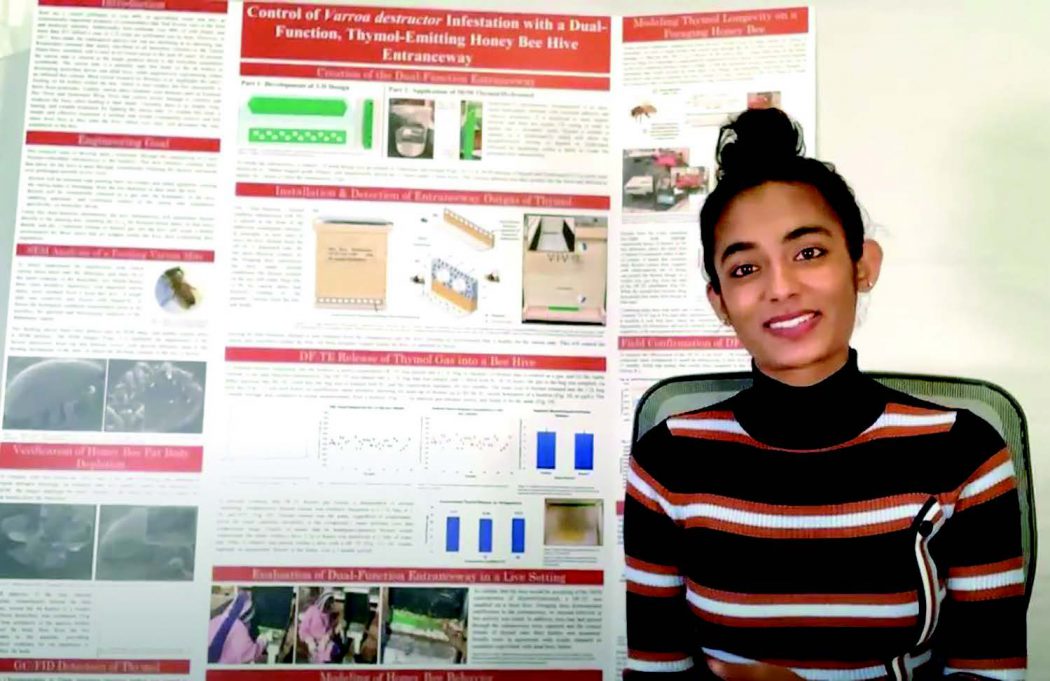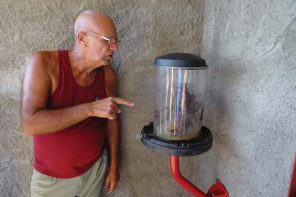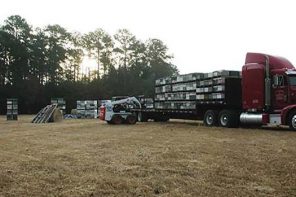By: Raina Jain
My name is Raina Jain, I go to Greenwich High School and live in Riverside Connecticut. I’ve had a passion for science as long as I can remember – I emailed National Geographic and NASA as a hopeful 12-year-old with science articles I wrote, for a chance to have them published in their monthly magazines. I got a response stating “Thank you for your interest but we only accept articles from professional writers at this time. Stay curious.” Though it may seem small, I tell children that this was the beginning of a long and unforgettable scientific journey.
Every person is a scientist by heart – we all have at one point asked “Why is the sky blue?” or “Why is the moon following me?” I’ve realized that you don’t need to be the smartest or most creative person to be successful in this field. You just need to be curious, which every person already is. For all children reading this, I hope you remember that.
My friend was a semifinalist at the Regeneron Science Talent Search, and after doing some research about this prestigious competition, I was in awe of the amount of opportunity, lasting connections, and tight-knit group of friends the Regeneron STS experience entailed. I applied, and little did I know how much of a life-changing and transformative experience this would be. To be part of such an inquisitive, fearless, and big-thinking group of students who are tackling the most pressing problems was simply an honor. Although all the finalists explored different realms of science – we are united by our passion to use science as a tool and make the world a better place.
- Why the focus on Honey Bees? Are you a beekeeper or know a beekeeper and have heard about our 4 P’s: pest, parasite, pathogen and poor nutrition challenges?
- My family friend has a bee farm and she kept telling me about the issue of Varroa mites. I only realized the extent to what she meant when I visited her bee farm first hand, and was in complete shock to see hundreds of hives completely empty. I’ve been raised with the principles of live and let live – to value each life no matter how small. Seeing these tiny yet fascinating creatures being affected so greatly with little defense was what propelled me to create an effective, safe, and affordable treatment for Varroa mite infestations in honey beehives. Bees have become a hobby of mine – a passion fostered by this science project itself.
- I have heard about the 4 Ps – I think it’s a great way to simply sum up what we now know are the greatest threats to the honey bee population worldwide. It is important to educate people, especially our youth about active steps they can take to help save the bees.
- How did you find out about Varroa mites and the incomplete control of them in honey bee colonies?
- I was a finalist at the 2018 National Junior Science and Humanities Symposium (JSHS) and Dr. Samuel Ramsey, a famous entomologist who discovered the Varroa mites feed on the fat body of bees as opposed to the blood, was the keynote speaker. It was one of the most eye-opening and engaging presentations I’ve ever attended. After leaving the science fair inspired, I invited him to my laboratory where we discussed potential solutions to rid of mite infestations. His presentation was what allowed for the conception of a dual-function entranceway. Since his presentation in 2018, we have been staying in touch and he has been an instrumental figure in my journey with saving the bees.
- What research led you to be able to ID a chemical Varroa control option? Why Thymol?
- After doing research on varroacides, I considered many potential substances. The reason I chose thymol was not only was it the most natural substance (bees pollinate the thymus-derived plant itself) but there was a great difference in the lethal concentration (LC50) between the Varroa mite and the honey bee that I knew I could take advantage of. The LC50 for a Varroa mite was 56µg, whereas the LC50 for the honey bee was 250µg. I realized that if I could deposit thymol content slightly above the 56µg limit but much lower than the 250µg, I could create a viable solution to guaranteeing the death of the parasite but simultaneously leaving the honey bee unharmed – which is exactly the case in my research.
- I decided to deliver the thymol in an entranceway form. I realized that not only would this method be consistent in delivering the same dose of thymol per bee, but the gaseous release would also combat idle mites inside the hive. One of the most commonly used methods of controlling mite populations, Apiguard, is temperature dependent, cannot be used during the honey-flow period, and inhibits the flight ability of the bee. I wanted to create a device that has no adverse effects on the honey bee and does not need to be removed regardless of the state of the hive. I found the most effective way to achieve this was through an entranceway to the beehive itself.
- I am sure you know that Bayer had a similar product on the market. Have you spoken to them?
- Bayer has been working on a similar product. The “Varroa gate” – the prototype they’ve been researching for the past eight years – uses the pesticides coumaphos and flumethrin (both of which have been developed in Bayer laboratories). There was an article published in Nature recently – a widely recognized scientific journal – about coumaphos’s effects on honey bees. The article centered on how coumaphos was highly toxic to bees and studies found traces of this pesticide in 98% of wax samples. Coumaphos is a very under-studied treatment and there is much more research needed to determine the adverse effects on the health of the honey bee and the environment. In my research, I found thymol was a much safer and effective approach as it is a natural plant that bees pollinate themselves.
- Since Varroa is typically concentrated on young ‘Nurse Bees’ in the brood nest area of a honey bee colony how does your delivery device lower Varroa levels if it is only targeting older forager bees coming and going from the hive entrance?
- The entranceway is dual-function, meaning that in addition to the physical deposition of thymol as the bees pass through the entranceway, there is also gaseous release of thymol in the hive, combatting the mites present on the non-foraging bees. The thymol is embedded in hydromed – a substance which embeds the thymol in a hard gel and allows for the controlled release of thymol (both in physical and gaseous form). Due to this controlled-release, the dual-function entranceway is temperature independent, does not contaminate the honey or larvae, and just requires a one-time installation with no additional maintenance.
- What Varroa mite sampling procedure was used to ascertain Varroa population numbers per 100 bees. Did you use the Honey Bee Health Coalition (HBHC) , ‘Tools for Varroa Management Guide’ for that metric?
- Being an inexperienced beekeeper before the start of my project, I was using the screen methods to count mites. After reading the Honey Bee Health Coalition (HBHC), ‘Tools for Varroa Management Guide’, I quickly realized that the alcohol wash and sugar roll methods account for far less variability. I am not a fan and have never recommended the alcohol wash simply because the bees die. I believe in the principle of live and let live – to value each life no matter how small. I advised my volunteers to use the sugar roll method to determine Varroa mite populations with the installation of the entranceway every week for eight weeks.
- What is the next step in how you help Beekeepers with this product?
- I am currently in contact with a bee farm that has over 30,000 beehives in California in which I will be testing my device on. Although this was supposed to take place in the Summer, my laboratory closed down due to the Covid-19 pandemic and it has now been postponed to the Fall. I have also obtained a U.S. patent. Once the patent is completed and I receive mass data from the bee farm in California, I look forward to distributing this device to beekeepers on a larger scale.
- How can Beekeepers help you?
- Throughout my journey with bees, I’ve noticed beekeepers love and respect for these fascinating creatures with a united common goal to save the bees. If you have a significant amount of hives and would like to test this product, please reach out to me so I can expedite the process to get this entranceway out to beekeepers everywhere. raina.jain55@gmail.com







